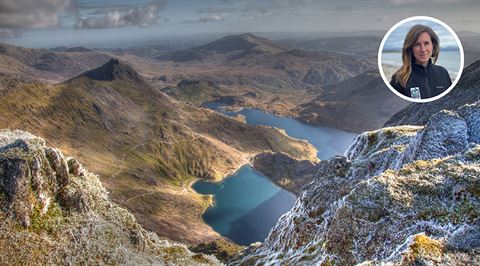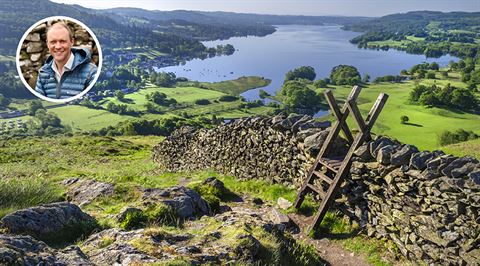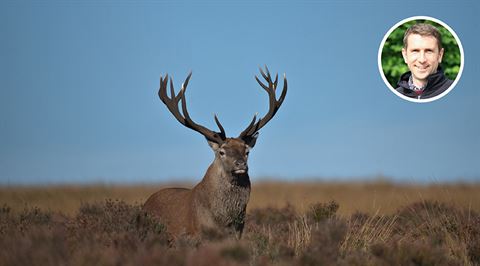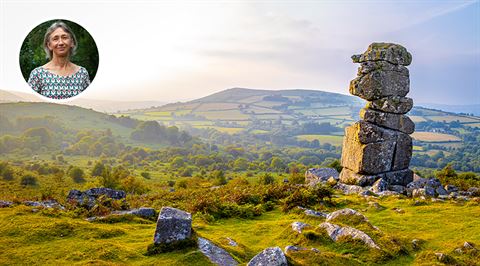INSPIRATION • September 2021
What is the future of the National Parks?
Officially formed back in 1951, the UK’s first four National Parks are blowing out the birthday candles on seven decades of bringing joy to the masses. The Club talks to the men and women behind these green and pleasant reserves to find out what’s in store for the next 70 years...

Snowdonia
Angela Jones, partnerships manager, Snowdonia National Park Authority
How did Covid-19 affect the park? Once the lockdown restrictions eased, we experienced a significantly higher number of day visitors. To compensate, we ensured overflow car parking and increased bus services, particularly around Yr Wyddfa (Snowdon), and have upped the number of exceptional volunteers collecting litter and advising visitors.
If you could let visitors know one thing, what would it be? I’d urge them to use our many glorious campsites and glamping sites (as opposed to fly-camping), to plan ahead (e.g. pre-book your car parking at Pen y Pass car park) and to try to visit us outside of the summer months.
What’s your favourite spot in the park? The Celtic rainforests never fail to be awe-inspiring.

The Lake District
Richard Leafe, chief executive of the Lake District National Park Authority
What have been some the park’s biggest achievements? For me it’s the 48 miles of stiles-free routes we have across the park for those with limited mobility, becoming a World Heritage Site in 2017 and delivering a £3m programme to restore the public footpaths after Storm Desmond.
How did Covid-19 affect the park? We’ve definitely seen an increase in people camping and parking overnight since lockdown eased, but we’d urge people to remember that you must have landowner permission to do this – and to avoid camping in car parks, laybys, near farm buildings or livestock.
What do the next 70 years look like for the Lake District? We’ll be continuing to make sure this iconic landscape is accessible to all, with an emphasis on tackling major climate change challenges (89 per cent of our 19 million annual visitors come by car – creating around a third of the park’s carbon emissions) and have recently announced our aspiration to become a net-zero organisation by 2025.

The Peak District
Tom Marshall, marketing and communications manager, Peak District National Park
What’s your day-to-day like? I look after a fantastic team that is responsible for much of our public engagement, namely via our website and social media. One minute we may be liaising with rangers on the ground, the next, answering a phone call with a TV production company to discuss filming locations.
How did Covid-19 affect the park? It’s perhaps no surprise that everyone sought sanctuary in nature after lockdown, but sadly this didn’t always come with respect for the landscape. However, our hundreds of volunteers, partners and communities all came together under the badge of #PeakDistrictProud – and that’s still our motto as the pandemic restrictions ease.
What’s your favourite spot in the park? No great secret but I have a soft spot for the Eastern Moors, where my wife and I got engaged. In late summer it bursts with a carpet of blooming purple heather, and the right conditions in winter can deliver stunning cloud ‘inversions’ in the valley below. Red deer stags strut their stuff in the autumn, and an array of birds, reptiles and other creatures makes it a must for an avid wildlife-watcher like me!

Dartmoor
Alison Kohler, director of conservation and communities, Dartmoor National Park
What’s your day-to-day like? Some days I can be in the office writing reports, on others I’m lucky enough to be on site – looking at an amazing new path for walkers or cyclists, or at the enhancement of an archaeological site. We work with local people, farmers and landowners to agree on solutions and then it’s our job to find the resources to deliver.
How did Covid-19 affect the park? During the pandemic, it was lovely to see that the value of our National Parks and open spaces was truly recognised. However, I was almost brought to tears by the damage at one of our Bronze Age archaeological sites due to the number of fire pits and litter left behind that put livestock in danger. We banned camping so the site could recover and employed marshals to engage with people about just how important and fragile the National Park is.
What do the next 70 years look like for Dartmoor?
Along with other National Parks, Dartmoor can be part of the backbone for nature recovery across the country and it can positively contribute to the public’s health and wellbeing. We need to support our farming community given changes to new trade deals and develop greener ways to travel. Our 50-year vision is of a place that is alive with nature, large areas of peatland restored, valley mires and rhôs moorland improved, and species-rich hay meadows much more widespread. There will be more trees, as Dartmoor’s ancient, damaged and fragmented wooded landscape will be protected and restored.
This article has been tagged Destination, Travel Tips
More from previous issues

Seven things to notice on your next flight
The Club has the lowdown on all that's new and exciting on your journey ahead with British Airways

The UK’s best sparkling wine (and where to drink it)
Britain’s finest home-grown bubbles are worth celebrating, so visit a vineyard and find out for yourself

Five expert tricks for a better night’s sleep
From pillow spray to a calming tea, we’ve got your (sleepy) back when it comes to bedtime

How to pack like a... pilot
Boeing 787 First Officer Manon van de Meent opens up her summer suitcase for scrutiny